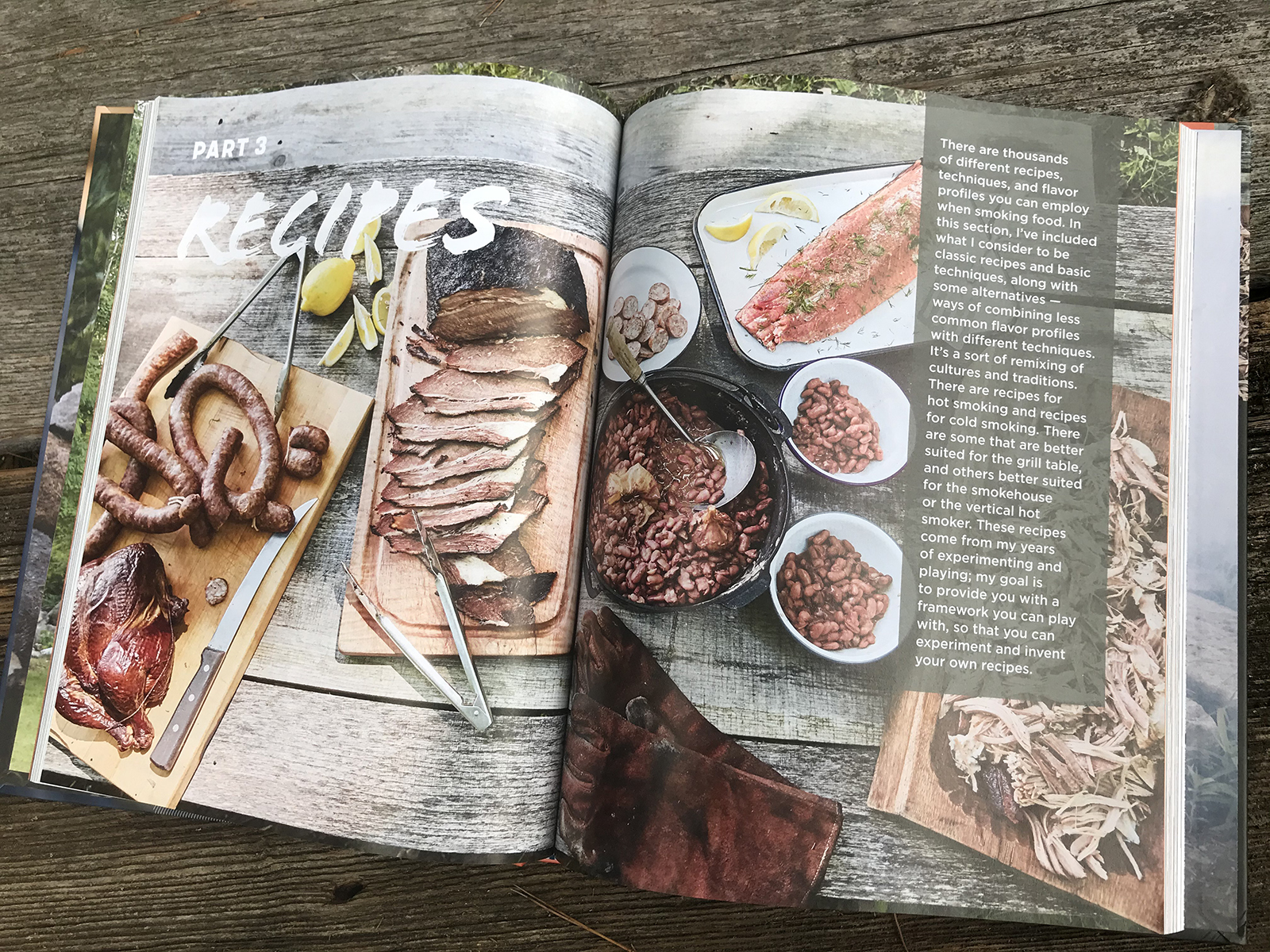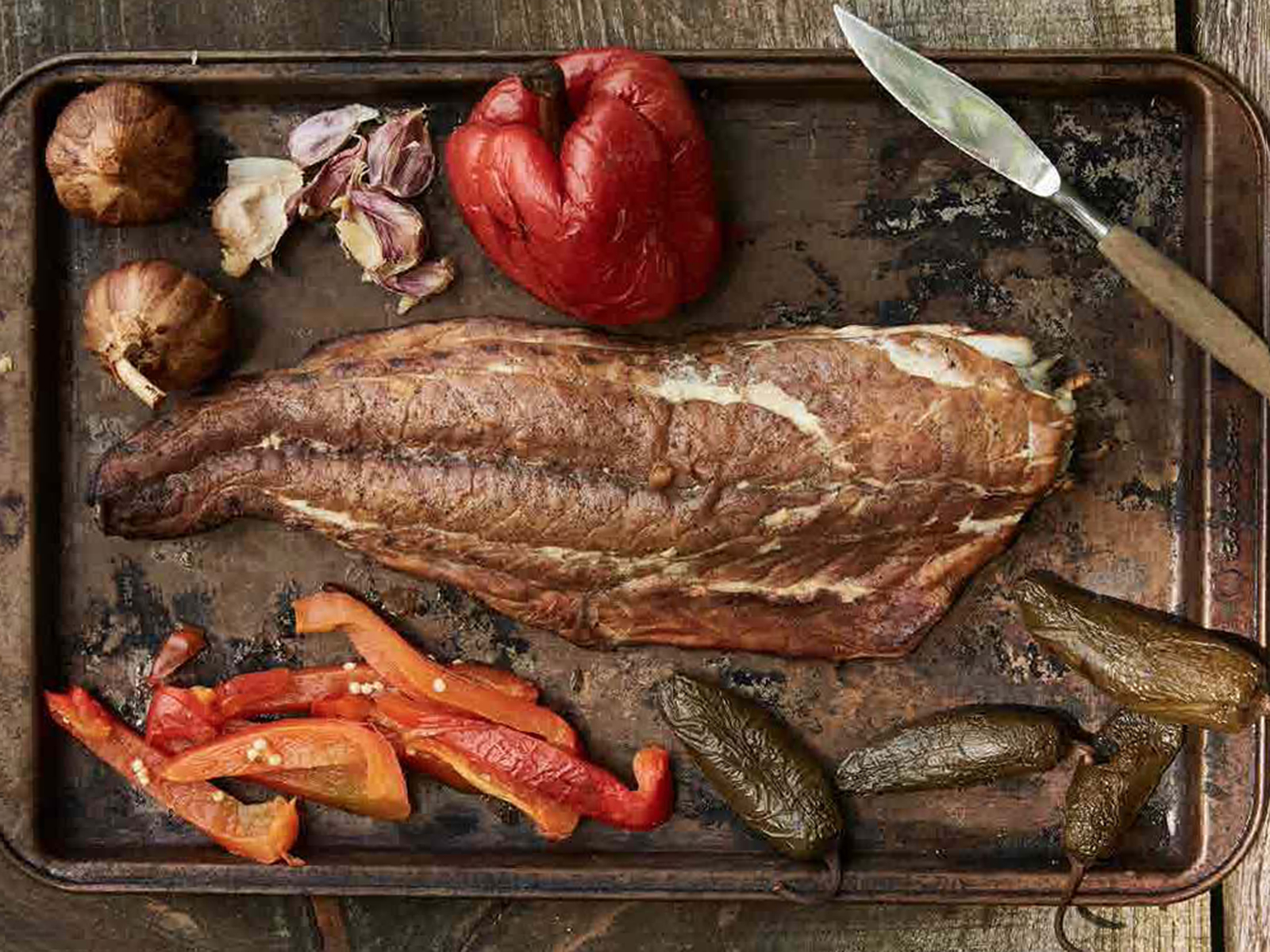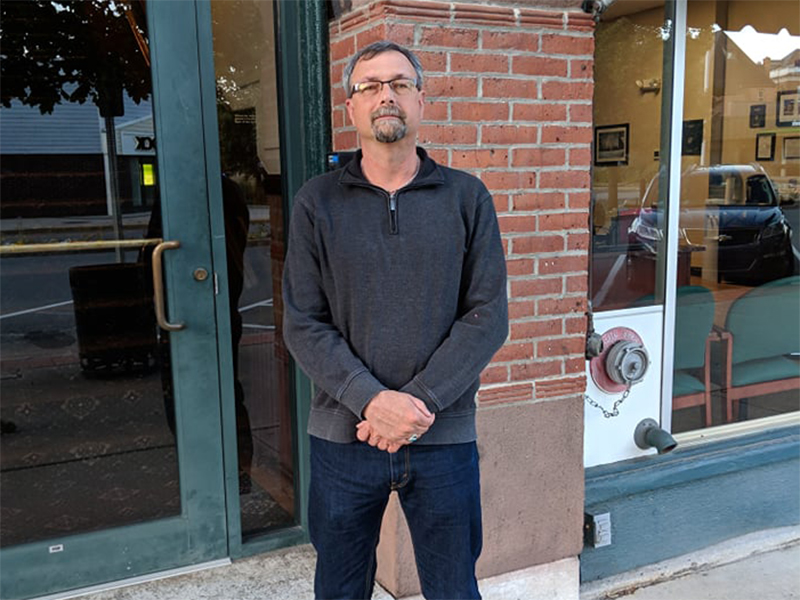This is episode 16 of Plenty. I’m your host, Jason Velazquez, and as always, I do thank you for tuning in.
 Podcast Player
Podcast Player 
Podcast (plenty): Play in new window | Download
Subscribe: RSS
This edition of Plenty features yet another special guest, Jake Levin, whose food knowledge and skills speak to the very heart of sustainability, which is the preservation of food for later, in addition to indulging in decadent flavor now. His recently published book, Smokehouse Handbook, illustrates how anyone, anywhere, can employ techniques that will up their cooking cred with minimal tools and at minimal cost. At least until you’re hooked and start dreaming of converting the garden shed into a smokehouse — and he can help you out there, too…
I’d also like to say thank you to our newest sponsor, Greylock WORKS of North Adams, Mass.
sponsored

An elegantly reimagined historic mill, Greylock WORKS is a mixed-use campus that offers event, retail, private studio, and shared office space – all revolving around it’s core mission to celebrate this region’s food and sustainable design.
Residential lofts for sale and rent planned for 2020. Experience Greylock WORKS on November 23, during FESTIVE: A holiday market celebrating exquisite design and local food, featuring over 60 thoughtfully curated makers and farmers. More information at greylockworks.com.
We’ll be launching into our coverage of the impact of the climate crisis on the local food system soon, and you can be sure we’ll be looking into the role local food hubs like Greylock WORKS will play in the future.
All the stars seemed to align for this show, because almost immediately after I chowed down on that Brisket Egg & Cheese breakfast sandwich from A-oK Barbeque (in the name of journalism, of course), a copy of Jake Levin’s Smokehouse Handbook: Comprehensive Techniques & Specialty Recipes for Smoking Meat, Fish & Vegetables, dropped into my lap. Just released by Storey Publishing, right here in North Adams, this book, with it’s gorgeous photography and very approachable instructions and recipes is like a treasure map for your taste buds. I knew I needed to sink my teeth a little deeper into this savory serenity. So I picked up the phone and called Jake to see if I couldn’t catch some drippings of knowledge from this seasoned pro.
About Jake Levin

Jake Levin is the author of Smokehouse Handbook. A butcher and charcuterie expert who trained at Fleisher’s Meat in Kingston, New York, he has worked in whole-animal butcher shops including The Meat Market in Great Barrington, Massachusetts, and Eli’s Manhattan in New York City. He currently produces cured meats at Jacuterie, an artisanal charcuterie in Ancramdale, New York, and travels nationwide conducting workshops on how to slaughter, butcher, and cure meats. He and his wife live in New Marlborough, Massachusetts, and his website is therovingbutcher.com, though he suggests following his Facebook or Instagram pages for his most recent happenings and updates.
And of interest to our listeners in Western Mass, Eastern New York, or Southwestern Vermont, Levin will be the speaker at the Food for Thought dinner and demo, November 9th at Hancock Shaker Village, another of our wonderful sponsors. When you’re mouth starts watering — and I think it might just start not long into the conversation — you may want to grab tickets to that event, if they haven’t sold out yet.
Smoking — a global, human tradition
So you have examples of it all over the world. There are great examples throughout Native Americans and First Nation in Canada. It’s a big part of Northern European culture. So, when I went to visit my wife’s relatives on a small island in Sweden, you saw these small rock huts everywhere. And, you know, fish is a big part of the diet there, and so there was a lot of smoked fish, and that’s existed for for as long as we can tell. In West Africa, smoked fish is also a big part of the diet. Again that serves as a way of preserving the fish so that it doesn’t spoil in the hot weather. There are examples of it with the Maori in New Zealand, and lots of smoking traditions in East Asia.

Don’t be afraid to get smoky
I think that there are bunch of different things that scare people. I think some people are freaked out by needing to have lots of equipment and new equipment that’s just for smoking, which isn’t really the case. Other people are freaked out by the time commitment. Texas-style smoked brisket can take 12 hours for instance. And then, as normal, most people are afraid of a new process or a process they don’t understand. And so I like to tell people to start small and easy. You can easily build a stovetop smoker with equipment that anybody would have in their kitchen, whether it’s a roasting pan or a sheet pan, a kettle or a big pot, and some tin foil and a colander, a steam basket, and then, start with a pork tenderloin or a fillet of salmon, or a duck breast — something that only takes five or 10 minutes to smoke. And then, if you you are excited about the process, you can go bigger from there. Maybe move on to your grill and start smoking some stuff in your grill. Maybe it’s ribs, maybe it’s a steak or a whole chicken or pork shoulder, and you take it from there. You don’t need to buy new equipment. And if you really love it, then you can buy some more serious, or build your own more seriou,s smoking equipment.
The danger of heat spikes, the importance of moisture
Sure, well, when you’re hot smoking, you want to avoid major temperature fluctuation. That’s something that I certainly struggled with at first is how do you maintain a consistent temperature and not get these big spikes. If you’re smoking, let’s say ribs or pork shoulder, you want to keep it around to 225 degrees. I like to keep it around 225 degrees. It’s about getting that rhythm in terms of when you add, whether you’re using split logs or wood chips or sawdust, how and when you add that so the the temperatures doesn’t spike to 350 suddenly, or so you don’t lose a lot of time by letting the temperature drop to like 100. I really think that’s about just just experimenting, you know, playing with it and getting the hang of it. Every smoker is a little different and each piece of wood acts a little differently. So that’s about experience and playing.
Another thing is, I really like to wrap the meat at a certain point when I’m hot smoking—people call it the Texas crutch. And that’s when after a certain point, you wrap the pork shoulder or brisket either in tin foil or burlap or newspaper. And that’s because at a certain point, the connective tissue in the meat has broken down, but you still want to cook it a little longer, but while it’s cooking, obviously, it’s losing moisture. And that’s what can dry it out. So if you wrap it up, it’s still still exposed to heat, so that connective tissue can still break down, but you’re not losing the moisture, so it’s not drying out. So that’s, that’s a great little tip and some competition barbecue people will tell you that’s cheating or something, but it’s not cheating. I mean, and we’re just trying to eat a good piece of smoked meat at home, so who cares?
Thanks for listening, and don’t forget to subscribe through Apple Music, Google Play Music, or directly through a podcast player of your choice, such as Downcast, my personal favorite. Until next time, cook with attitude and dine with gratitude.













You must be logged in to post a comment.